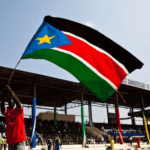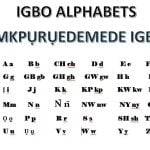Africa’s population is growing quickly, most obvious in its populous cities. All of the top largest cities in Africa have more than two million people in excess living in them.
While it is easy to think that larger areas can take up more people, this is not the case for most overpopulated African cities. Some of these cities are so small that having these levels of population density is considered a risk.
In this article, we will look at some of Africa’s largest cities by land area and population. You’ll be shocked at how populated some of these cities are.
6 Largest city in Africa by land mass
1. Kinshasa

Kinshasa is located on the south bank of the Congo River, about 320 miles (515 km) from the Atlantic Ocean. Kinshasa is not only the capital but also the place where the country’s personality has been shaped by the many different and sometimes conflicting forces.
Kinshasa spreads southward from Malebo Pool, a widening of the Congo River, where it meets the shore of the city. The city is on a plain that is mostly between 918 feet (280 meters) and 1,148 feet (350 meters) above sea level and is partly surrounded by higher ground.
Kinshasa has a total land area of 9,965 km2, making it the largest city in Africa.
2. Cairo
Cairo is in the northern part of Egypt, which is called Lower Egypt. It is 165 kilometers (100 miles) south of the Mediterranean Sea and 120 kilometers (75 miles) west of the Gulf of Suez and the Suez Canal.
The city is on the Nile River, just south of where the river splits off from its valley in the desert and flows into the low-lying Nile Delta area. Cairo has a total land area of 2,734 km2, making it one of the largest cities in Africa by land mass.
3. Ibadan

With a total land area of 3,080 km2, Ibadan remains one of the largest cities in Africa. Ibadan is in the southeastern part of Oyo State, which is in southwestern Nigeria.
It is about 119 kilometers (74 miles) northeast of Lagos and 120 kilometers (75 miles) east of the international border between Nigeria and the Republic of Benin.
The valley area of the city is 150 m above sea level, while the main north-south ridge that runs through the middle of the city is 275 m above sea level.
4. Cape town
Cape Town is at latitude 33.55° S, which is about the same as Sydney and Buenos Aires and is the same as Casablanca and Los Angeles in the northern hemisphere.
Its longitude is 18.25° E, which is about the same as Casablanca and Los Angeles. Cape Town covers 2,461 km2, which makes it one of the largest cities in Africa in terms of land area.
5. Durban
Durban is on the east coast of South Africa, facing the Indian Ocean. The city is at the tip of the Umgeni River, which forms part of the north city limit of Durban and flows through the city itself in other places.
Durban Harbour, which is a natural harbor, is the busiest port in South Africa and the fourth-busiest port in the Southern Hemisphere. Durban has a total land area of 2,292 km2, making it one of the largest in Africa.
6. Cabinda

The modern country of Cabinda was made when the kingdoms of N’Goyo, Loango, and Kakongo came together. It is 7,290 km2 in size (2,810 sq mi).
The status of Cabdina as an exclave and province of Angola in Africa has been disputed by a number of political groups in the area. Locals call the capital city Tchiowa, Tsiowa, or Kiowa. It is also called Cabinda.
The province has four municipalities: Belize, Buco-Zau, Cabinda, and Cacongo.
6 Largest city in Africa by population
1. Lagos, Nigeria (15,388,000)

Lagos is the most populated city in Nigeria and Africa, with a population of 15,388,000. It is one of the cities with the most people living in it in the world. This city is a place where everything is the best it can be. This city is growing at one of the fastest rates in the world.
Lagos was Nigeria’s capital until 1991. Even though some institutions have moved, the city is still a major economic force. It has one of the biggest ports in Africa, and it is also the country’s biggest industrial center.
The results are a lot of pollution in the air, uncontrolled growth, and a troubling high crime rate.
2. Kinshasa, Republic of Congo (7,786,000)
Kinshasa is the capital and largest city of the Democratic Republic of the Congo. It is right by the Congo River. It is the second biggest French-speaking city in the world after Paris. It is thought that about 7.7 million people live in Kinshasa.
Even though the DRC has a lot of minerals, 64% of its people live in poverty. Gas, oil, agriculture, and wood are some of Kinshasa’s other important economic resources.
Most of its people don’t get to share in the profits from the economy because of corruption and ongoing wars. OSAC says that the level of crime is critical. There are street gangs in the city, which makes it very dangerous.
3. Cairo, Egypt (7,734,600)

Cairo is the capital of Egypt and its largest city. It is known as the place where civilization began. Over 7.7 million people live there. A 2014 report from the Population Reference Bureau says that the country’s population grows by 2.6% each year.
Two-thirds of Egypt’s GDP is made in the greater metropolitan area, which is why Cairo is the country’s economic center. Some of the industries that create the most jobs in the city are those that work with textiles and food, make iron and steel, make consumer goods, etc.
Cairo is also a busy place for business, government services, and tourism. Since the revolution in January 2011, food and medicine prices have gone up, and the number of people without jobs has gone up.
Cairo also has a lot of crime. In the Greater Cairo area, there are eight informal settlements that are too crowded and have a lot of people who live below the international poverty level of $2 a day. These settlements have low levels of education, and a lot of people are malnourished and have bad health conditions.
4. Kano, Nigeria (4,103,000)
Kano is the capital of the northern Nigerian state of the same name. It has about 2.8 million people living there. It has the second most people in the country after Lagos.
A report from 2013 by the Kano State Government Investor’s Handbook says that the city’s population grows by 3.5% each year. Kano is the center of business and trade in northern Nigeria. It has a gross domestic product of $29.38 billion per year on average.
Kano is a market for more than 300 million people because it is a regional trade center. The biggest threat to Kano comes from Boko Haram’s terrorist attacks, which happen mostly in the north.
On market days, public holidays, and religious holidays, these things happen. Security problems happen in the city because of bad government, poverty, and uncontrolled migration.
5. Alexandria, Egypt (3, 811, 500)
Egypt’s city of Alexandria is a beach and port city on the Mediterranean that is 115.8 square miles in size. Alexander the Great started it in 331 BC. It has about 3.8 million people, making it the second-largest city in the country.
Every year, 1.7% more people move to Alexandria. Every year, the city gives $46 billion to the economy of Egypt. Tourism is a big part of its economy. It is called the Pearl of the Mediterranean because of this.
Nearly half of Egypt’s industrial work is done in and around Alexandria, which means it uses a lot of water. Some of the things that are making Alexandria’s water needs grow are agriculture, a growing population, and rapid urbanization.
A Governor is put in charge of the city by the President. Since the Egyptian revolution in 2011, crime and terrorist threats have gone up in Alexandria.
6. Abidjan, Ivory coast (3, 677, 100)

Ivory Coast’s economic capital is Abidjan City, which covers an area of 818 square miles. It is thought to have about 3.6 million people living there. Abidjan is the city and industrial center of the Ivory Coast.
The city is responsible for 18% of all jobs in the country, 52% of all jobs in secondary and tertiary education, and 50% of the country’s GDP. The cocoa, oil, and natural gas industries are also very important to the economy.
A refinery in Abidjan turns crude oil into something else. The oil is then shipped overseas or used to make oil products locally.
Conclusion
Having known the largest cities in Africa by population and land size, you can now decide where you’ll like to visit if you are into touring.
Want to know the smallest countries in Africa, read Top 12 Smallest Countries In Africa and let us know what you think about them.















